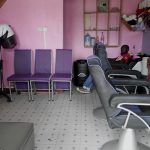Rural electrification agency (REA) a semi- self-governing entity that was established by an act of parliament. It was established to operationalize government rural electrification task. REA’s responsibilities and mandate are enshrined and defined in the 1999 electricity act. Established as a statutory instrument in 2001, rural electrification agency commenced its operations in 2003. REA has since implemented projects which include independent grids and off-grid solutions, renewable energy generation, grid extension and photovoltaic systems.
In 2013, less than 7% of Uganda’s rural population had electricity service accessibility. The government had set a goal of rural electrification access to 26% in a period of ten years from 2013. To achieve this, REA had to strengthen its efforts and apply transformative/modified approaches for extending electricity to rural areas. In its efforts to realise the set ten years’ goal program of achieving 26% rural electrification, rural electrification agency is currently undertaking a number of activities. Among the activities being undertaken include, connecting all district headquarters, extending electricity to all communities that are under implementation phase, provision of electricity to trading centres, schools, health centres and rehabilitation of damaged lines. In the financial year 2013/14, 90% of all then existing Ugandan district headquarters were already connected to the national grid. A total of five district headquarters had been connected to the national grid in the same financial year i.e. Otuk, Amuru, Moyo, Buliisa and Adjuman. This indicated that rural electrification agency was progressing towards achieving its primary goal of availing electricity to all upcountry areas and more especially the rural. More visible in areas that had no hope of having access to the national grid are currently connected.
In the recent upcountry visit I had to my home district, I made a stopover at Buguri, a rural trading centre situated in Buyanja sub-county Rukungir district. To my surprise, Biguri was lighting courtesy of REA. This is a good step achieved towards getting all national rural areas connected. Amidst progress of rural electrification, I realized that more efforts are needed towards sensitizing the general public on harnessing and sustaining power that was made available to areas like Biguri.
On 10th October 2017, electricity regulatory authority announced a reduction in price of electricity per unit consumed from 686 to 685.6 Ugandan shillings for saloons, kiosks, households and shops. This is another power price reduction in the last four months. Reducing prices of power per unit consumed is one other good initiative towards making power affordable to the local citizens who use it to operate businesses and generate income. But this is still too high for a young man who operates a saloon in Biguri trading centre to make sound profits. Previously, a saloon or kiosk operator that consumed one thousand units would pay six hundred eighty-six thousand shillings (686,000) but currently will pay six hundred eighty-five thousand six hundred (685,600) hence saving four hundred shillings as per the power reduction figures. This arithmetic informs us that on every one unit consumed, a saloon operator in Biguri will save only 0.4 shillings from the recent power price reduction. Such power prices are still very high to favour small and growing business like saloons, kiosks and retail shops who still consume low volumes of electricity unlike heavy consumers like industries and factories. This is where REA must work closely ERA to bring down power prices so that power lines don’t end up passing over houses in rural areas but used to generate income for rural populace. I also keenly monitored and studied quite a number of rural setups that are connected to the national grid. Most of the homes and rural trading centres only use power for lighting, making it an expense instead of an income generating input. This is another critical area where rural electrification agency must chip in and sensitize the public on how to harness electricity extended to them and generate income than only spending on it.
From less than 7% in 2013 to 8.05% rural electricity accessibility in 2017, we are progressing as a country in terms of accessibility but more effort is needed in sensitizing the general rural public on how to harness and put electricity into productive use and consider 70% transformers installation aimed at productive use and 30% towards other activities like lighting.
Brian K Katabazi,
Associate Director, Centre for Energy Governance








